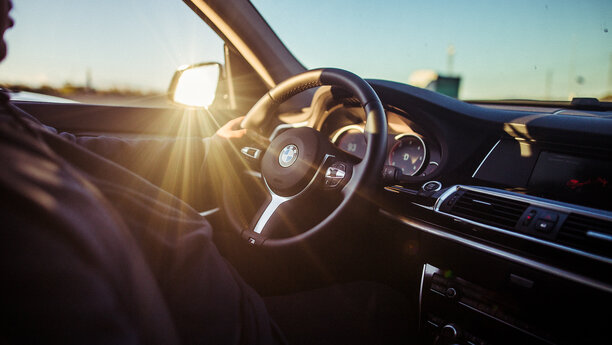The countdown has begun, the Summer Olympics are less than six months away. Fans from all over the world will be descending on host city Paris to watch the best athletes in the world compete for Olympic gold. For Brits driving to France via the Eurotunnel or hiring a car once abroad, driving in any foreign country can be confusing. But SIXT is here to help with six essential driving tips for anyone setting off to experience the world’s biggest and most prestigious sporting event. Plus useful information such as road types, speed limits and emergency numbers.
- KNOW YOUR STANDARD RULES
Alongside more obvious things such as driving on the right, rather than the left, giving way to traffic on the right at intersections – there are plenty of other rules to get to know before you travel in France. For example, if on a steep hill, uphill traffic has priority and downhill traffic must give way.
- TOLLS
French motorways are marked by the letter A for Autoroute, followed by numbers. Most French autoroutes are operated by private companies and are therefore toll motorways. Entrances to them are marked with the word “Péage”. When entering an autoroute with a toll, you’ll pick up a ticket as you enter. Tolls are then paid either as you leave the autoroute, or when the toll area comes to an end. In certain places, there are fixed toll points, usually in urban areas or toll bridges.
- LOW EMISSION ZONES / CLEAN AIR STICKERS
Certain areas of France require all vehicles to display a ‘clean air’ windscreen sticker – also called a Crit’Air vignette to identify their levels of emissions (with six levels overall). Vehicles with lower emissions can access a variety of benefits, including better parking and traffic conditions, whereas polluting vehicles can be denied entry to certain areas entirely, with each area setting its own minimum level requirement. You can check which cities require the Crit’Air vignette ahead of your journey and order one from the official website for around £3.60 – much preferred to the on the spot fine of up to €135.
- KNOW YOUR LIMITS
Speed camera detectors, including those as part of sat-nav systems are illegal in the country so ensure that you stick to the speed limits! The speed limits in France are measured in kilometres an hour, rather than miles per hour. The standard speed limits are slightly higher than those in the UK so it is important that you familiarise yourself with them before you travel to the country. Our top tip is to look for the word ‘Bis’ on road signs – this indicates a ‘holiday route’ which is usually a less crowded and more scenic alternative.
- AVOID ALCOHOL
The maximum legal blood alcohol level for drivers in France is 0.05% – which is less than the 0.08% limit in England, Wales and Northern Ireland. If your blood alcohol level is higher than 0.08%, you could be fined up to €4,500 or even face a prison sentence of two years. So, you may want to steer clear of alcohol completely if you know you will be driving, to be on the safe side.
- DON’T FORGET YOUR EQUIPMENT Don’t
While the UK has no laws around items which must be always kept in a vehicle, France is much stricter. If you are driving a private car from the UK and driving into France, your vehicle will require a GB sticker to be displayed clearly on the exterior. The law also requires that you always carry within the vehicle; a red warning triangle, a high-visibility reflective jacket, headlamp adjusters and a breathalyser testing kit. All SIXT cars rented in France come equipped with these items as standard, giving you one less thing to worry about.
TYPES OF ROADS
- Blue sign marked with an A: Highway/Motorway
- Green sign marked with an N: National highway
- Yellow sign marked with a D: Departmental route
- White sign: Town
SPEED LIMITS
- Within city limits: 50 km/hr (30 mph)
- 2-3 lane rural roads: 80 km/hr (50 mph)
- 4 lane expressways (rural): 110 km/hr (68 mph)
- Motorway: 130 km/hr (80 mph)
EMERGENCY NUMBERS
- Police: 117 (from a mobile phone) / 17 (from a fixed line)
- Fire: 118 (from a mobile phone) / 18 (from a fixed line)
- Ambulance: 115 (from a mobile phone) / 15 (from a fixed line)



